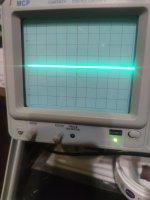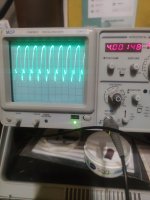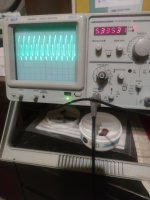I suggested going around all of the IC output pins in post #617 with the x10 probe, to try to identify if that loading affected things. If it does, there is something definitely wrong with the IC's output stage feeding that pin. Though, if one IC appeared to be particularly problematic, , just to be sure I, would make sure that the IC was properly bypassed on its supply pins by adding a 0.1uF capacitor across these and check for a solid +5V to the IC's power pin.
As mentioned, though it is more of a cmos than a TTL issue, IC's can behave really oddly if they get disconnected from their + supply voltage, could be due to a fault inside the IC or even a broken track or bad soldering leading to the supply pin on the IC. They can still "work" sometimes because the die can source power from input pins when they are high, due to the internal clamping diodes in the substrate. Until that is, for a moment, all input pins go low and the IC's function crashes.
The other thing that can give the game away with a logic IC, is to check the actual levels on the scope (scope on DC coupling) that the output voltage swings between, on the output pins, it should be for TTL very close to ground when low and in the order of 3 to 3.5V when high, unless there is a pull-up resistor when it can get close to 5V..



